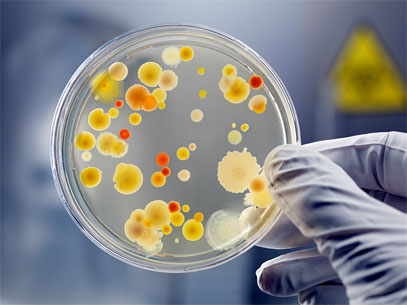
A rare element found in the waste excreted by tiny bacteria is so effective at limiting high-energy light that it could used in applications as diverse as eye glasses and aircraft defense, according to a new study published by University of Houston researchers.
Seamus Curran, associate professor of physics and head of UH’s Institute for NanoEnergy, published his findings on tellurium, a scarce metalloid typically used as a semiconductor, in a December edition of the journal Chemical Physical Letters. Ronald Oremland at the United States Geological Survey (USGS) and Werner Blau at Trinity College in Ireland worked with Curran on the project.
Tellurium normally exists in compound form but USGS researchers recently discovered that bacteria can take these compounds from the water and produce pure nanorods of tellurium. Curran and his team then developed a new polymer comprised of plastics and these tellurium nanorods that can protect against high-intensity light.
Tellurium can be produced artificially but the process is very expensive and requires a significant investment in chemical manufacturing. But the bacteria can make pure tellurium in a cost-efficient and environmentally-friendly process.
“This form of producing tellurium is a new and natural method of what we like to call‘nanomanufacturing’ where bacterial are nature’s foundries and we can use them with plastics to form a unique blend.”
The tellurium composite Curran formed using these nanorods is a unique hybrid that provides the most effective form of optical limiting currently available.
When a powerful light or laser is shined onto this new polymer, the tellurium absorbs the light energy and passes it into the surrounding matrix which heats up and vaporizes. The vapor bubbles created reflect incoming light over a wide range of wavelengths.
The next step to applying this technology, Curran said, is developing a coating from the new polymer that can be used on eye glasses, infrared goggles, welders’ masks or anything else that protects the eyes from powerful light. It could even be used to protect military aircraft from laser-guided munitions.
Curran’s team is now studying other hybrid organic/inorganic materials to see if they have similar effects. The nano-sized minerals formed by bacteria as they metabolize metal oxides such as tellurium could be useful in a wide array of commercial applications – especially in solar energy – and herald a new ‘green’ era of nanoparticle manufacturing, Curran said.
This project was funded by the U.S. Department of Energy. It is just one facet of the research happening at the newly-formed Institute for NanoEnergy, which is comprised of about two dozen UH physics faculty and researchers. Their work focuses on applying nanotechnology to improving solar cells, energy storage, wind turbines and other alternative energy solutions. |

